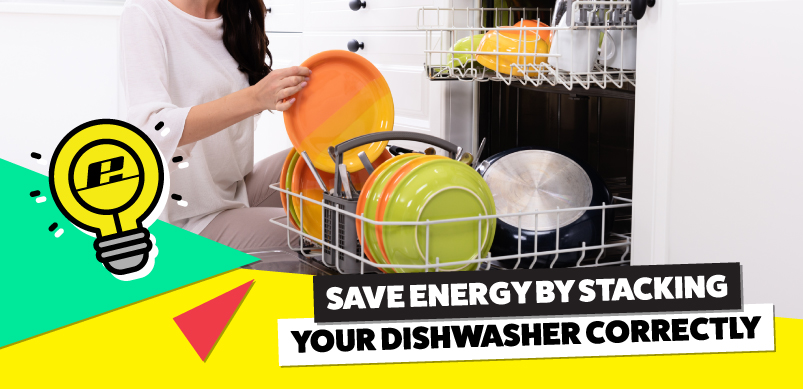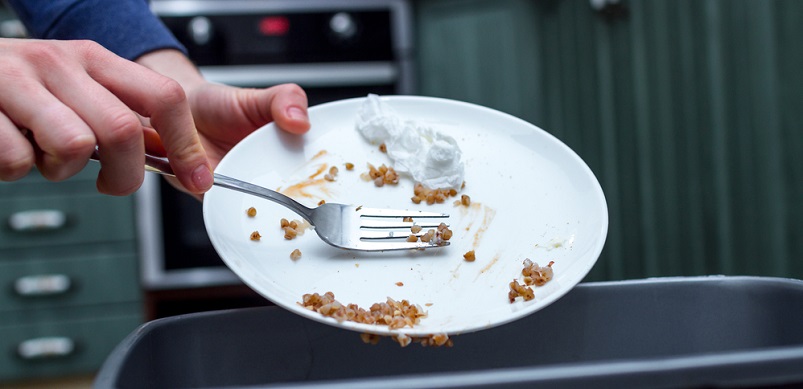
Are YOU wasting energy by filling your dishwasher incorrectly?
December 5, 2022 | Appliance Energy Saving | Dishwasher Repair, Help & Advice | No comments
Of all the age-old debates and disputes, the question of how to correctly stack a dishwasher rages on to this day. Which way up does the cutlery go? Where do you put your mugs? How full is too full? Well, we’re here to answer these burning questions and end that debate once and for all. Plus, we’ll help you save plenty of money on your energy bills in the process!
How full is too full?

Loading your dishwasher incorrectly can have drastic results on your dishwasher’s performance, resulting in high energy usage. That includes overfilling or underfilling your dishwasher. Underfilling your dishwasher means you’ll be running cycles more frequently, which also means more energy spent on lots of little washes. Overfilling, however, can result in your dishwasher being too crammed and your dishes not being cleaned properly, meaning extra cycles are needed to do the job right.
That’s why you should try to run cycles only when your dishwasher is full, but not when it’s overly crowded. You should also ensure that dishes, cutlery and all other items aren’t touching each other excessively and that they have enough space to be thoroughly cleaned. This will provide the best cleaning results for all of your dishes, cutlery and utensils, whilst also making sure your energy expenditure is kept under control.
What goes where?

Now that we’ve gotten the basics of filling your dishwasher the appropriate amount out of the way, let’s take a look at the smaller details. Knowing what goes where, and what positions they should go in, will also ensure your dishwasher provides an energy-efficient and effective clean. This includes…
- Cutlery: When putting cutlery in the dishwasher, knives, forks and spoons should all go in the cutlery basket. Spoons and forks can be positioned with their handles facing down, but knives should always be placed in the basket blade-down to avoid any injuries.
- Larger utensils: Any larger utensils should be kept out of the cutlery basket, as they can block the spray arm. Instead, items like large knives, wooden spoons, spatulas and the like should be laid down in the upper basket where they won’t be an obstruction. In general, you should always make sure the spray arms inside your dishwasher aren’t blocked.
- Plates: Plates should always go in the plate rack. This may seem obvious, but it’s worth being reminded as the plate rack is specifically designed to hold plates. If you place plates in any other parts of the dishwasher, there’s the risk of them shifting and becoming damaged during a cycle.
- Mugs and glasses: Mugs and glasses should always be positioned upside down in the top basket of the dishwasher. Positioning them like this will prevent them from filling up with water, which is both wasteful and unhygienic as the water that collects may still be dirty by the time a cycle finishes.
- Smaller bits and bobs: Any other smaller bits you might place inside the dishwasher, such as bottle caps and so on, should go in the cutlery basket. Otherwise, they will likely move around inside the dishwasher and could even end up causing a blockage.
Extra dishwasher cleaning tips

With all the necessary knowledge on how to correctly fill your dishwasher provided, we’ll leave you with a couple of handy tips to really help you get the best performance out of your appliance! First of all, you should always make sure you scrape off your dishes before placing them inside the dishwasher. Otherwise, food debris can cause blockages inside the appliance and the dishes will generally be harder to clean if they’re extra dirty, which could mean extra dishwasher cycles and wasted energy as a result. You don’t however, need to rinse them before they go in!
Secondly, it’s vital to make sure your dishwasher itself is kept clean too. After all, how can your appliance keep cleaning your dishes and cutlery properly if it isn’t kept clean itself? Simply running a cycle with some dishwasher descaler once a month will help ensure your appliance remains spick and span and carries out cycles in a cost-effective and energy-efficient manner!
All in all, you can save quite a bit of money on your energy bills – and extra time loading and emptying the dishwasher – by making sure you’re filling it appropriately and running cycles at the right time. However, this is just one of many ways you can cut down your energy bills at home! Our 50 appliance energy-saving tips will help you save a small fortune before you know it…

